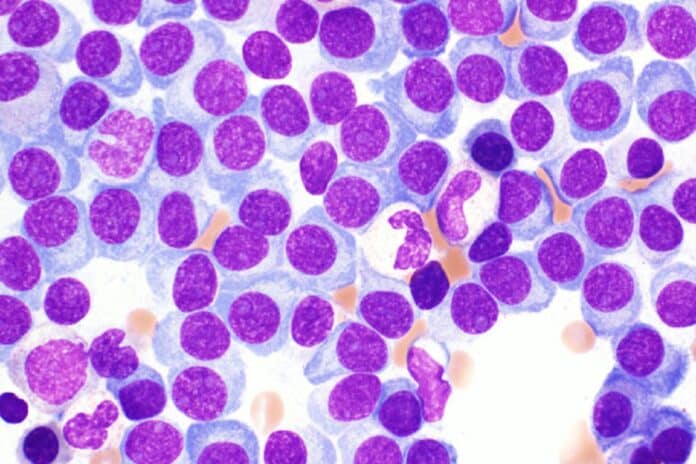The standard treatment for patients with multiple myeloma frequently includes stem cell transplantation, which involves harvesting and storing the patient’s stem cells while receiving intensive chemotherapy to kill cancer.
The patient’s stem cells are then returned to them to aid recovery. However, for a significant proportion of patients, the number of stem cells that can be harvested needs to be increased for transplant, which has a negative impact on patient outcomes.
An international phase 3 clinical trial led by physicians at Washington University School of Medicine in St. Louis found that when combined with standard stem cell mobilization therapy, the investigational drug motixafortide significantly increases the number of stem cells that can be harvested when compared to treatment with the standard agent alone. If approved by regulatory agencies, the combination with motixafortide can improve the stem cell transplantation process for patients with multiple myeloma.
Senior author John F. DiPersio, MD, Ph.D., the Virginia E. & Sam J. Golman Professor of Medicine, said, “Stem cell transplantation is central to the treatment of multiple myeloma, but some patients don’t see as much benefit because standard therapies can’t harvest enough stem cells for the transplant to be effective.”
DiPersio treats patients at Siteman Cancer Center at Barnes-Jewish Hospital and Washington University School of Medicine, said, “This study suggests motixafortide works extremely well with the standard drug, granulocyte colony-stimulating factor (G-CSF), in mobilizing stem cells in patients with multiple myeloma. The study also found that the combination worked rapidly and was generally well-tolerated by patients. We are hopeful that this investigational drug if approved, will expand the number of patients who can receive an effective stem cell transplant for multiple myeloma.“
Multiple myeloma is a blood and bone marrow cancer that responds well to initial treatment in some people but relapses in nearly all. In patients with multiple myeloma, a minimum of 2 million stem cells per kilogram body weight is required for a stem cell transplant.
However, greater than 5 million to 6 million stem cells per kilogram body weight is considered optimum. When used in conjunction with the standard stem cell therapy, G-CSF, the investigational drug motixafortide allowed optimal amounts of stem cells to be harvested in over 92% of patients after two collection procedures, compared to only 26% of patients who received G-CSF with a placebo.
The research showed that appropriate stem cell quantities could be collected from 88% of patients who took motixafortide + G-CSF, compared to only 9% of patients who received standard G-CSF plus a placebo.
The researchers also found that stem cells harvested with motixafortide in combination with G-CSF showed a tenfold increase in the number of primitive stem cells that could be collected. Primitive stem cells have greater potential to develop into a wider variety of blood cell types, making them more effective at reconstituting red blood cells, white blood cells, and platelets.
Motixafortide also boosts the expression of genes and genetic pathways related to self-renewal and regeneration, all of which are advantageous to the efficacy of a stem cell transplant. Patients with sickle cell disease cannot be treated with G-CSF, the most often used agent for stem cell mobilization, due to serious adverse effects such as clogged blood arteries, organ failure, and death.
A new study discovered 53 genes that could be useful in creating future medicines. Thirty-eight of these genes produce aberrant proteins on the surface of multiple myeloma cells. These proteins could be used as targets for future immunotherapies; 11 of the 38 genes have not previously been identified as potential targets.
The aim of the new study is that by developing a novel, effective, and well-tolerated stem cell mobilizing protocol for a viral-based gene therapy strategy using CRISPR-based gene editing, patients with sickle cell disease will have better results.
The clinical trial was funded by BioLineRx Ltd., which manufactures motixafortide, and the National Institutes of Health (NIH).
Journal Reference:
- Crees ZD, Rettig MP, Jayasinghe R., et al. A randomized, placebo-controlled, phase III trial evaluating motixafortide and G-CSF to mobilize hematopoietic stem cells for autologous transplantation in multiple myeloma — the Genesis trial. Nature Medicine.
- Yao L, Wang JT, Jayasinghe RG,etal . Single-cell discovery and multi-omic characterization of therapeutic targets in multiple myeloma. Cancer Research.
